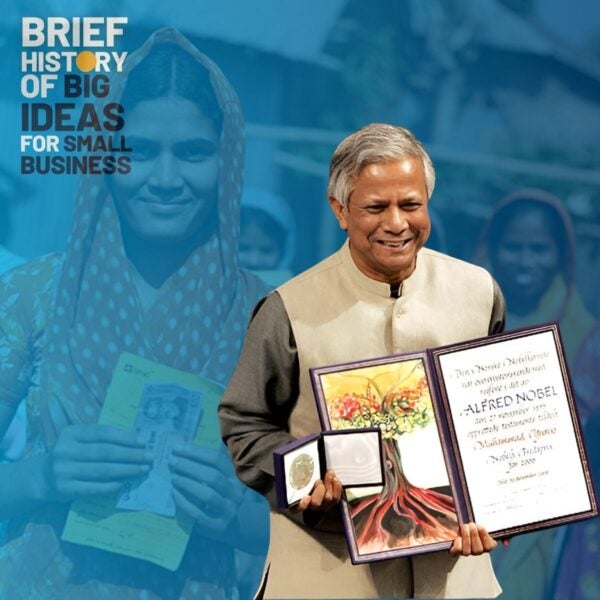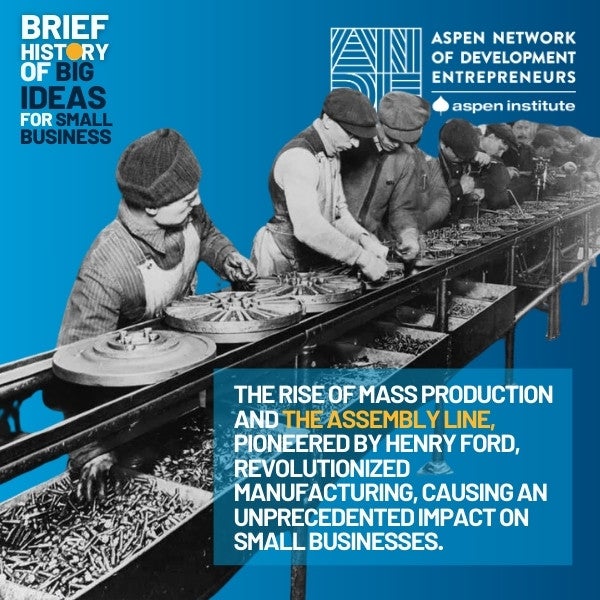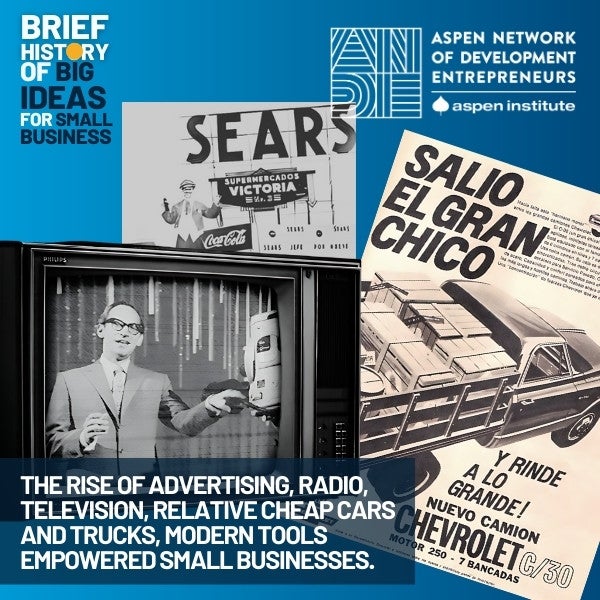
 From Souk to Supermarket
From Souk to Supermarket
The 20th Century’s Global Odyssey brought forth a wave of transformative ideas that would redefine small business.
The year is 1935. In a bustling souk in Fez, Morocco, Fatima, a skilled artisan, meticulously hand-stitches intricate designs onto leather goods. Half a world away, in the heart of New York City, Moe Levy, a Jewish immigrant, proudly stands behind the counter of his family’s delicatessen, serving up traditional Ashkenazi fare. Meanwhile, in Caracas, Benancio da Silva, a recent migrant from Portugal, organizes the shelves of his well-provided hardware store. Little do they know, their livelihoods are about to face unprecedented challenges in the turbulent century ahead.
 The 20th century brought forth a wave of transformative ideas that would redefine small business. The rise of mass production and the assembly line, pioneered by Henry Ford, revolutionized manufacturing, allowing goods to be produced at unprecedented speed and scale. This both threatened and empowered small businesses, forcing them to adapt or risk being left behind.
The 20th century brought forth a wave of transformative ideas that would redefine small business. The rise of mass production and the assembly line, pioneered by Henry Ford, revolutionized manufacturing, allowing goods to be produced at unprecedented speed and scale. This both threatened and empowered small businesses, forcing them to adapt or risk being left behind.
In Fez, Fatima’s exquisite leatherwork faced competition from cheaper, mass-produced goods flooding the market. Newspaper accounts from the 1930s highlight the struggles of Moroccan artisans as they grappled with the influx of imported goods and changing consumer preferences. Yet, Fatima adapted, focusing on the unique cultural heritage and craftsmanship of her products, attracting tourists and collectors who valued authenticity and artistry.
In New York City and Caracas, both Levy and da Silva would face the growing dominance of supermarket chains, which could offer a wider variety of goods at lower prices. Newspaper articles from the 1950s and 60s documented the decline of traditional bakeries, delis and small family stores in the face of suburbanization and changing demographics. However, Moe Levy found his niche by catering to the nostalgic cravings of Jewish immigrants and their descendants, preserving a culinary tradition, and da Silva family learned to keep their tradition and grow their small empire of neighborhood stores by building over a loyal customer base.
Yet, the very forces that threatened small businesses also opened new opportunities. The rise of consumerism and disposable income fueled demand for a wider variety of goods and services. Small businesses could leverage their agility and responsiveness to cater to niche markets and offer personalized experiences that larger corporations couldn’t match.
 The rise of advertising and marketing, coupled with the advent of radio and television, provided small businesses with new tools to reach customers and grow brand awareness. The growth of suburbs and car ownership formed new commercial districts and opportunities for local shops and services.
The rise of advertising and marketing, coupled with the advent of radio and television, provided small businesses with new tools to reach customers and grow brand awareness. The growth of suburbs and car ownership formed new commercial districts and opportunities for local shops and services.
The later decades of the 20th century saw the rise of franchising, a model that allowed small business owners to leverage a proven brand and business system. This provided a pathway for individuals with limited capital and experience to become entrepreneurs, expanding the reach of small business ownership.
Similar trends unfolded in the Global South. The liberalization of markets and the intensification of international trade opened up new opportunities for small businesses to access global supply chains and export their products. However, it also exposed them to increased competition from foreign companies.
 Governments and development organizations recognized the importance of small businesses for economic growth and poverty reduction. Microfinance initiatives provided access to credit for small entrepreneurs who were often excluded from traditional banking systems.
Governments and development organizations recognized the importance of small businesses for economic growth and poverty reduction. Microfinance initiatives provided access to credit for small entrepreneurs who were often excluded from traditional banking systems.
The 20th century was a tumultuous time for small businesses worldwide, a constant balancing act between tradition and innovation, between the local and the global. But through it all, the entrepreneurial spirit endured, as exemplified by individuals like Fatima, Moe, and Benancio finding new ways to thrive in a changing world.
From the souks of Fez to the delis of New York, the story of small business in the 20th century is a testament to the resilience of human ingenuity. It’s a story of cultural adaptation, innovation, and the unwavering pursuit of economic empowerment, no matter the corner of the globe.
